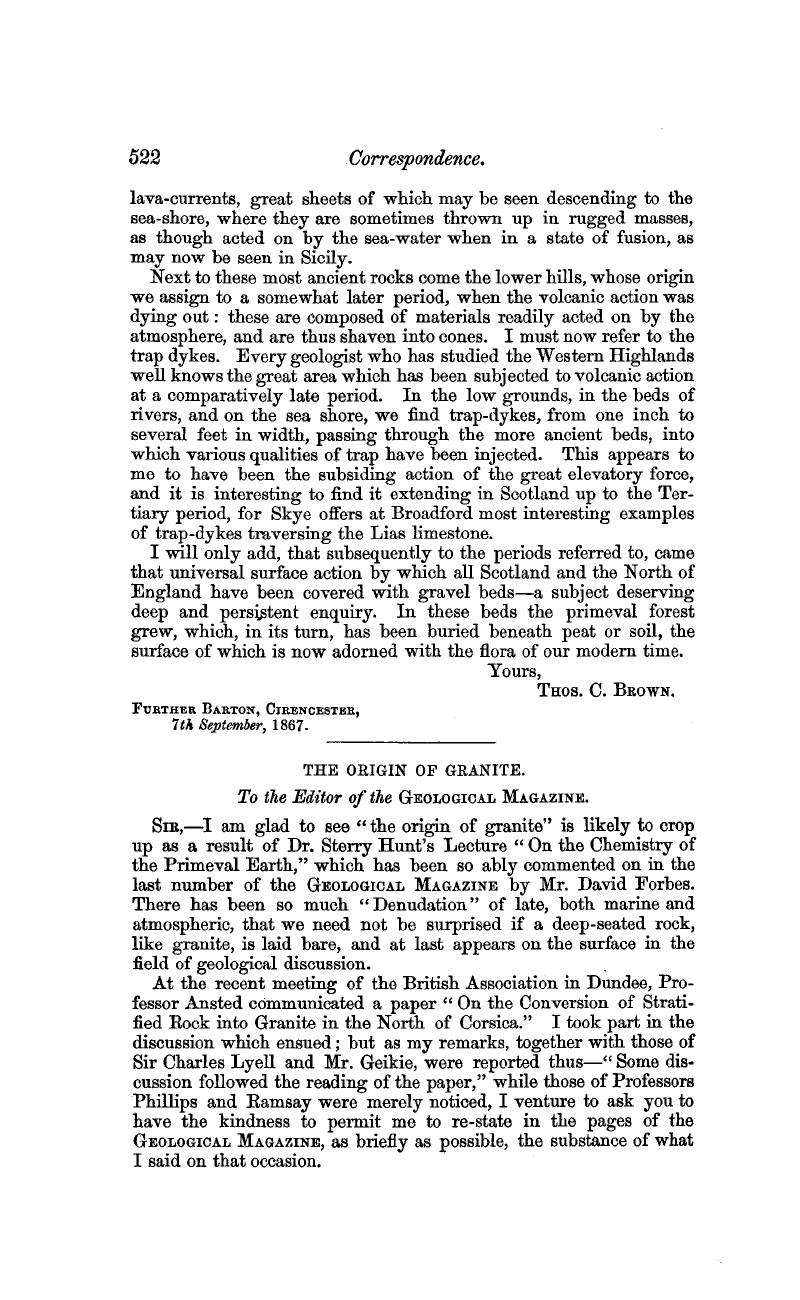Article contents
The Origin of Granite
Published online by Cambridge University Press: 01 May 2009
Abstract

- Type
- Correspondence
- Information
- Copyright
- Copyright © Cambridge University Press 1867
References
page 523 note 1 Jukes, , “Student's Manual of Geology,” pp. 93 and 313. I think, however, further proof is required as to its being of the same age as the rock which alters the Carboniferous Limestone near Carlingford: it rather differs in appearance and mineral composition from the Leinster granite, containing other micas, and notably by the occurrence in some places of albiteGoogle Scholar (Haughton, , Quart. Journ. Geol. Soc. vols. xii. and xiv.), though I believe that this feldspar is not so important a constituent as has been supposed.Google Scholar
page 523 note 2 Brit. Assoc. Report, 1863; Scott, Journ. Geol. Soc. Dublin, vols. ix. and xGoogle Scholar. See also Haughton, , “On Granites of Donegal,” Quart. Journ. Geol. Soc., vols. xviii. and xx.Google Scholar
page 523 note 3 There can be little doubt that some intrusive granites do occur in Donegal and perhaps largely in Connaught: we require further information on this point; a red patch on a map, lettered G for granite, does not teach us much.
[“Stratified eruptive rocks.] See Forbes, [The Microscope in Geology,] in this number, p. 515—EDIT.]
page 524 note 1 Geol. Report, Canada, 1854Google Scholar; and Bigsby, , Geol. Mag. Vol. I. p. 157.Google Scholar
- 1
- Cited by


